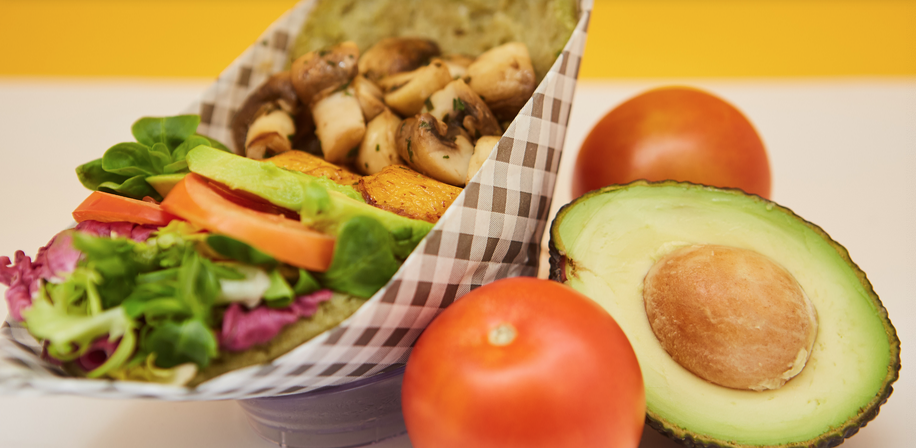The new premises on Richmond Street South is the latest chapter in the Arepas Grill’s tale of bringing the Venezuelan cuisine to the people of Dublin. Having previously served from street trucks at markets throughout the city, the company has found a home with four walls for their highly popular Latin American sandwiches. Not only that, but they have also delved into offering a dining experience that more closely resembles a restaurant. Their decision to diversify by offering three course meals as well as their well-known street food has not detracted from their authentic, convivial atmosphere.
The speciality here is budget-friendly arepas, which as their menus says, are “the head of Guinness for Venezuelans”. An arepa is a fried, flat, round cornbread from Latin America — it resembles an English muffin but functions like a pita pocket. The fillings which go into it are fresh ingredients, such as vegetables, salad, beans and meat. It is a sandwich suitable for all diners, picky eaters and restrictive diets alike. They are gluten-free, dairy-free and can be made vegetarian and vegan when the appropriate toppings are chosen.
Given that they are the centrepiece of the restaurant, I had to order an arepa. I opted for “The Veggie” (€9), which is suitable for coeliacs, vegans, and, of course, veggies. It was filled with mushrooms, avocado, tomatoes, mixed leaves and, most interestingly, fried sweet plantain. I was curious to see what this final ingredient would be like, having never tried plantain before. In theory, I knew that the plantain was essentially the more vegetable-like cooking banana, but I was surprised to find that it was far less sweet and more starchy than the familiar yellow fruit. The surprise was a good one as the lack of flavour meant the other ingredients were not overwhelmed. Averaging at €9-10, arepas are a budget-friendly staple on the menu.
“At €7.50, the dulce de lechoza was expensive and almost doubled my bill, but it was a real treat for the senses”
While the arepas are the restaurant’s namesake, they are far from the only fare that the restaurant has to offer. Other student-friendly options which are cooked at the grill include cachapas (traditional sweet corn pancakes, €10) and patacon (crispy green plantain served with ham, cheese and salad, €8.50). However, the toppings are not as extensive for these dishes as they are for arepas. There is a second menu which offers a three-course dinner. Main courses range from quinoa and sweet potato meatballs (vegan) at €13.50 up to the asado negro (a slow-roasted side of beef) at €21.50. To see whether the higher price tags were worth the quality, I got a dessert after I finished my arepa. Having played it safe with the main course, I ventured out of my comfort zone and was richly rewarded. At €7.50, the dulce de lechoza was expensive and almost doubled my bill, but it was a real treat for the senses. I am not normally a big Papaya fan but the tastes and textures were different from any prior experience I had with the fruit. It was cooked and served in a syrup, and presented with a real cinnamon stick and mint stem for both aesthetics and taste. Little shortbread biscuits were provided on the side to help soak up the syrup and all the flavours — sugar rush central.
The popularity of the Latin American cuisine that this restaurant specialises in is evidenced by the daily dizzying queues that they have had since they opened. I had to make two attempts at getting in on two separate evenings, before finally succeeding at getting a counter seat on Tuesday, the “off-peak” night. The weekend after opening they had queues that went out of the door, and they have not yet seen an empty table. This is obviously a huge point of pride for the staff and owners but the problem of bottlenecking is also one which they wish to remedy, since they hate to “send people home” as one waitress said. The management noted that they are rapidly working on fixing supply-side issues, and attempting to get their online booking system up and running. However the problem, which a staff member observed as, “not having enough tables for all of the people who want to come and eat here”, is one which perhaps can only be solved by an eventual move to larger premises — watch this space!






